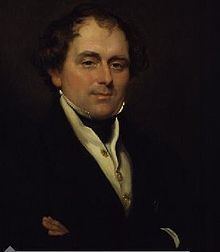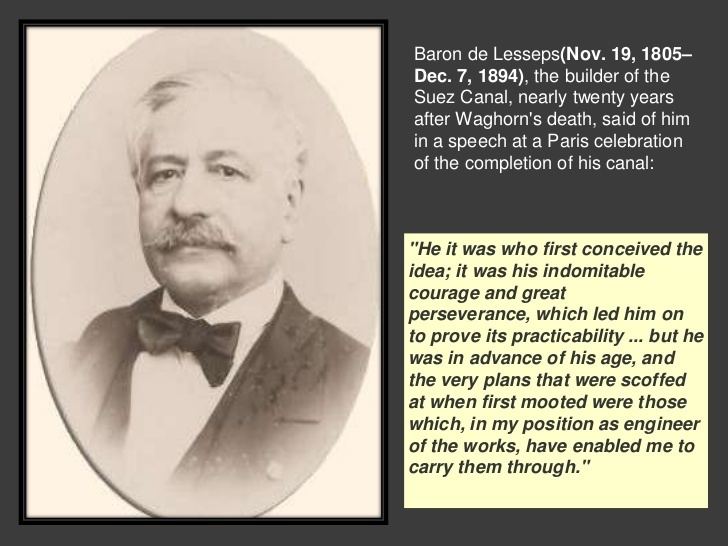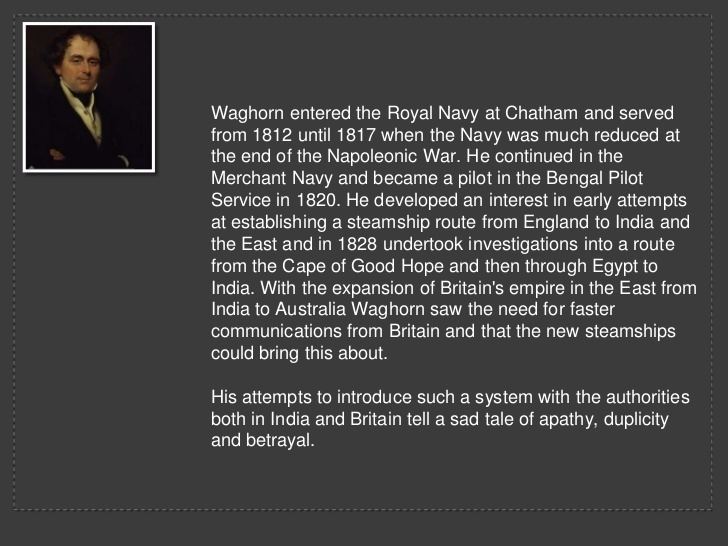Name Thomas Waghorn | ||
 | ||
Books The Bitter Bitter Cry of the Outcast Inventors | ||
Thomas Fletcher Waghorn (1800–1850), whose statue stands in Chatham, Kent, was a postal pioneer who developed a new route from Great Britain to India. Waghorn's route reduced the journey from 16,000 miles (26,000 km), via the Cape of Good Hope, to 6,000 miles (9,700 km): from three months to between 35 and 45 days.

Waghorn was born in Chatham, England, and baptised at St Mary's Church on 16 July 1800. His father, also Thomas, was a butcher and had married Ann Goodhugh at All Saints' Church, Snodland, on 28 July 1794.

At twelve years of age, Thomas entered the Royal Navy at Chatham, joining HMS Bahama as a midshipman in November 1812. He married Elizabeth Bartlett at St John's Cathedral, Calcutta, in 1822. He became a pilot and took an interest in the early attempts at establishing a steamship route from England to India and the East. But the East India Company—which effectively ran that continent for Britain—showed a remarkable indifference to his ideas.

After leaving the Navy as a lieutenant in 1832, he made the journey to India via Egypt as an experiment to send mail. Disastrously, the journey took four and a half months—but on his way back, he met the Pasha of Egypt, who supported his desert route idea.

Personal tragedy followed in March 1834 when his wife died in Calcutta. By December, however, Waghorn had remarried—to Harriet Martin, daughter of the miller at Snodland and a neighbour of his mother. That month, he also inherited a substantial estate from his grandfather, and the couple lived in Rochester until building The Lodge in Snodland’s upper High Street about 1841.

Waghorn's business plan began to flourish. He set up an agency in Cornhill, London, for conveying post—and passengers—to India via Egypt. Between 1835 and 1837, he lived among Arabs in the desert and laid the foundations for the overland route across the desert from Cairo to Suez. This involved building rest-houses and supplying guides, boats, horses and carriages for travellers.
He became deputy consul in Egypt in 1837 but soon fell out with the authorities. From 1840, P&O set up in competition with him, backed by the British government. Then came another setback: 300 horses died in a plague. It was the end—and the Pasha bought him out.
Waghorn turned his attention to speeding the post in Europe, through the new railway system. He was successful, but the Government reneged on a deal to pay his expenses for the trials, which left him £5,000 in debt.
Waghorn died at his London home in Islington on 7 January 1850. He was buried at All Saints', Snodland, just outside the vestry door. The south wall of the nave bears a memorial to him.
A statue of Waghorn was raised in Railway Street, Chatham, in 1888. Its inscription is: "Thomas Waghorn - Lieutenant RN - Pioneer and founder of the overland route - Born at Chatham 1800 - Died January 7th 1850". A public house in Railway Street is also named after him.
